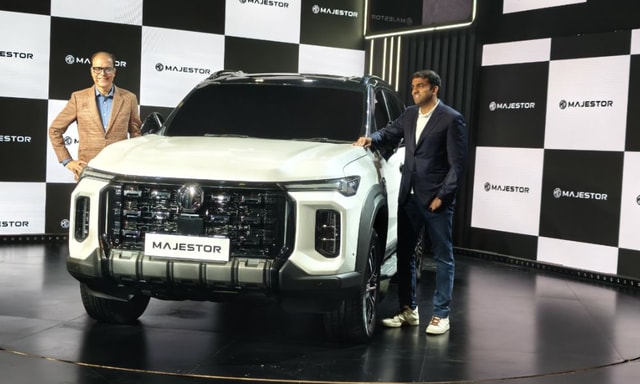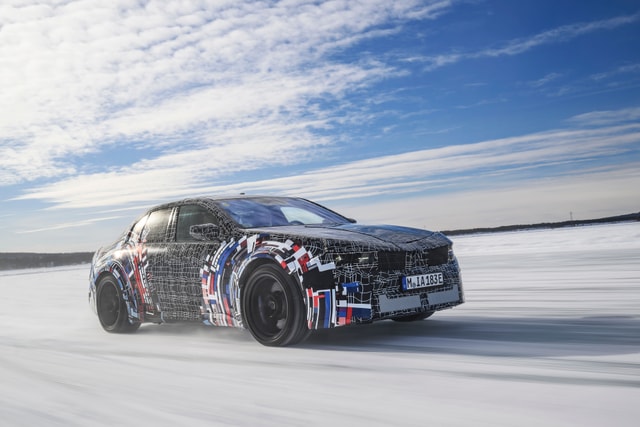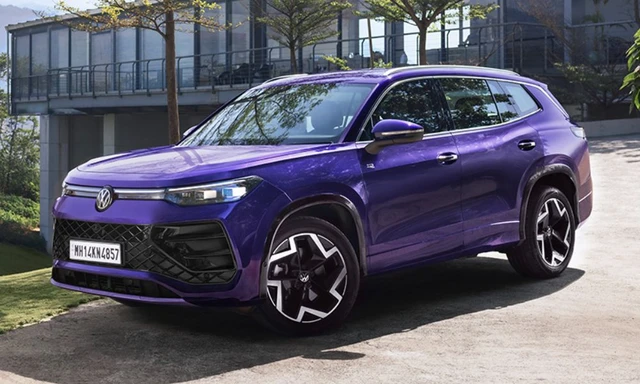Driverless Race Steps Up With Cruise Allowed To Drive Empty In San Francisco

The race for driverless autonomous vehicles is heating up and on Thursday Cruise became the first to receive a permit to test cars without anyone in them on the streets of San Francisco from California's Department of Motor Vehicles. Cruise, which is majority owned by General Motors Co and counts Honda Motor Co Ltd and SoftBank Group as investors, has been testing 180 self-driving cars in San Francisco with a safety driver behind the wheel, and the permit allows five of those cars to roam empty. But don't expect robo-taxis just yet.
“So that's a step or two beyond what we'll be doing initially with this permit,” said Dan Ammann, Cruise's chief executive. “It's not too far down the road,” he said, but declined to share a timeline.
In a blog post, he added, "We're not the first company to receive this permit, but we're going to be the first to put it to use on the streets of a major U.S. city."
It will be an important step for Cruise to charge customers. For any of the companies to start making money in California, a separate permit is required, state officials said.
As part of SoftBank's investment, SoftBank is obligated to purchase additional Cruise shares for $1.35 billion when Cruise is ready for commercial deployment.
“That's a nice incentive to get to commercial deployment,” said Ammann, adding Cruise was in "very strong" financial shape after raising more than $7 billion. Cruise booked a $1 billion loss in 2019, according to a GM filing.
Cruise is the fifth company to receive the driverless permit in California. Alphabet's Waymo was the first in late 2018 to receive it for about three dozen test vehicles with speeds of up to 65 miles per hour. This year SoftBank-backed Nuro, whose vehicle has no steering wheel or pedals, was also approved and has delivered medical supplies for temporary COVID-19 hospitals.
Chinese startup AutoX and Amazon.com Inc's Zoox also got their permits in recent months. The four previous permits are for cities in Silicon Valley that are easier to navigate. Under its permit, Cruise cars can go anywhere on San Francisco streets at a maximum speed of 30 miles per hour, and can drive both day and night.
In Arizona, which has been more open to testing of self-driving cars without drivers, Waymo has already been charging a select group of customers since summer of 2019 for empty vans that pull up and shuttle them around. That program - temporarily paused for the pandemic - was restarted in October and is expected to soon open to the wider public.
To prepare for its robotaxi future, Cruise is working on improving its ride hailing app that employees use for free to get around the city, Ammann said. That future would likely eventually include the Cruise Origin an electric vehicle with no steering wheel or pedals unveiled in January, but it would require approval from The National Highway Traffic Safety Administration (NHTSA).
Latest News
 car&bike Team | Jan 16, 2026MG Majestor India Launch On February 12Unveiled in India at the 2025 Bharat Mobility Expo, the Majestor is expected to be positioned as a more premium alternative to the Gloster.1 min read
car&bike Team | Jan 16, 2026MG Majestor India Launch On February 12Unveiled in India at the 2025 Bharat Mobility Expo, the Majestor is expected to be positioned as a more premium alternative to the Gloster.1 min read Jaiveer Mehra | Jan 15, 2026Kia Carens Clavis Gets New Sunroof-Equipped HTE(EX) Trim; Prices Start From Rs 12.55 LakhNew lower mid-spec trim is positioned between the HTE(O) and HTK variants and gets some additional features.1 min read
Jaiveer Mehra | Jan 15, 2026Kia Carens Clavis Gets New Sunroof-Equipped HTE(EX) Trim; Prices Start From Rs 12.55 LakhNew lower mid-spec trim is positioned between the HTE(O) and HTK variants and gets some additional features.1 min read Seshan Vijayraghvan | Jan 15, 2026All Electric BMW M3 Details Out; Will Offer Simulated Gear Shifts, Synthetic SoundsThe first EV from the high-performance division of BMW will get individual electric motors of all 4 wheels1 min read
Seshan Vijayraghvan | Jan 15, 2026All Electric BMW M3 Details Out; Will Offer Simulated Gear Shifts, Synthetic SoundsThe first EV from the high-performance division of BMW will get individual electric motors of all 4 wheels1 min read Jaiveer Mehra | Jan 15, 2026Volvo EX60 SUV Global Debut On Jan 21; Will Offer 810 km RangeNew GLC EV rival will be the first Volvo to use the next-gen SPA3 platform and support 400 kW fast charging.1 min read
Jaiveer Mehra | Jan 15, 2026Volvo EX60 SUV Global Debut On Jan 21; Will Offer 810 km RangeNew GLC EV rival will be the first Volvo to use the next-gen SPA3 platform and support 400 kW fast charging.1 min read Jaiveer Mehra | Jan 15, 2026India-Spec Volkswagen Tayron RevealedThree-row SUV will be offered in the R-Line trim with features like 19-inch wheels, a 15-inch touchscreen, front seats with ventilation & massage function and more.1 min read
Jaiveer Mehra | Jan 15, 2026India-Spec Volkswagen Tayron RevealedThree-row SUV will be offered in the R-Line trim with features like 19-inch wheels, a 15-inch touchscreen, front seats with ventilation & massage function and more.1 min read car&bike Team | Jan 15, 2026Mercedes-Benz EQS SUV Gets A Celebration Edition For 2026, Prices start at Rs. 1.34 CroreThe new celebration edition will be available with both the EQS 450 and the EQS 580 versions of the SUV.1 min read
car&bike Team | Jan 15, 2026Mercedes-Benz EQS SUV Gets A Celebration Edition For 2026, Prices start at Rs. 1.34 CroreThe new celebration edition will be available with both the EQS 450 and the EQS 580 versions of the SUV.1 min read
 Bilal Firfiray | Jan 9, 2026Toyota Urban Cruiser Hyryder: 10,000 km Long-Term ReviewAfter spending over three months and 10,000 km with the Toyota Urban Cruiser Hyryder Hybrid, we were impressed by its real-world mileage, seamless hybrid, practical comfort, and Toyota reliability. Is it the best C-SUV then?5 mins read
Bilal Firfiray | Jan 9, 2026Toyota Urban Cruiser Hyryder: 10,000 km Long-Term ReviewAfter spending over three months and 10,000 km with the Toyota Urban Cruiser Hyryder Hybrid, we were impressed by its real-world mileage, seamless hybrid, practical comfort, and Toyota reliability. Is it the best C-SUV then?5 mins read Seshan Vijayraghvan | Jan 8, 20262026 Mahindra XUV 7XO Review: Big On Tech, Bigger On ComfortThe new Mahindra XUV 7XO is flashier, feature packed, and comes with more advanced tech. But are the changes just incremental or actually substantial?1 min read
Seshan Vijayraghvan | Jan 8, 20262026 Mahindra XUV 7XO Review: Big On Tech, Bigger On ComfortThe new Mahindra XUV 7XO is flashier, feature packed, and comes with more advanced tech. But are the changes just incremental or actually substantial?1 min read Preetam Bora | Jan 10, 2026Simple One Gen 2 First Ride Review: 265 km Claimed Range!The Gen 2 model of Simple Energy’s first electric scooter gets a fair few updates, including new features, tech, more range and lighter weight. We spent a couple of hours with the Simple One Gen 2 to find out if it manages to impress.6 mins read
Preetam Bora | Jan 10, 2026Simple One Gen 2 First Ride Review: 265 km Claimed Range!The Gen 2 model of Simple Energy’s first electric scooter gets a fair few updates, including new features, tech, more range and lighter weight. We spent a couple of hours with the Simple One Gen 2 to find out if it manages to impress.6 mins read Amaan Ahmed | Jan 3, 2026VLF Mobster 135 300 KM Review: Fun But FlawedA 125 cc scooter with Italian design and Chinese genes is a rare combination, and while some may be tempted to dismiss it because of its origins, the VLF Mobster shows 125s can also be exciting – but not without compromises.11 mins read
Amaan Ahmed | Jan 3, 2026VLF Mobster 135 300 KM Review: Fun But FlawedA 125 cc scooter with Italian design and Chinese genes is a rare combination, and while some may be tempted to dismiss it because of its origins, the VLF Mobster shows 125s can also be exciting – but not without compromises.11 mins read Preetam Bora | Dec 30, 2025TVS Orbiter Review: Real-World Performance and Range TestedThe TVS Orbiter is a promising electric scooter promising decent range, practicality and pricing. But is there any reason to avoid it? We spent a few days getting to know it better.9 mins read
Preetam Bora | Dec 30, 2025TVS Orbiter Review: Real-World Performance and Range TestedThe TVS Orbiter is a promising electric scooter promising decent range, practicality and pricing. But is there any reason to avoid it? We spent a few days getting to know it better.9 mins read

























































































































